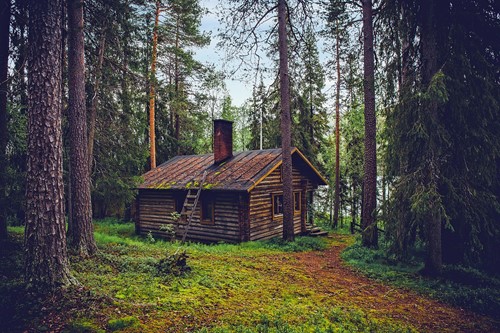Email: [email protected]

Log cabin designs have come to the forefront of architectural trends by offering homeowners a rustic, comfortable aesthetic in a busy modern world. From craftsman to contemporary, log cabin floor plans come in many styles and layouts to fit the needs of today’s homeowners.
The unique construction, appearance and characteristics of these stylized house floor plans make it an attractive option for those considering new construction.
However, there are many factors worth considering before you take the next step in your log cabin journey. Here are some of the most important things to know about cabin plans and construction:
While a certain design might come to mind when you think of log cabins, no two cabin house plans are exactly alike. There is potential for style differences in multiple aspects of the home, such as the specific trees the logs came from and the methods used to stack them into walls.
One major choice of style in cabin plans comes from the difference between sawn logs and milled logs. Sawn logs are always sawed in consistent widths, though they can have a unique appearance due to age and natural wood grain. Milled logs are put into a mold to achieve carefully regulated sizes and shapes, which creates a more uniform aesthetic.
As for cabin floor plans, there are plenty to choose from. While cabins traditionally emphasize casual indoor-outdoor living spaces like covered porches and open kitchens, you have the freedom to pick the style of interior you prefer.
The rustic style of a log cabin house plan celebrates the sense of nostalgia for a simpler age. However, for modern homeowners, this does not necessarily mean building and caring for a cabin is easy. In fact, certain aspects of maintenance and utility installation can be more difficult than other styles of modern home.
One major example is pest control. Relying on natural wood logs for construction includes the risk of unknowingly including insects in your household. To prevent uninvited guests, it’s crucial to inspect the exterior of your home regularly for any sign of infestation.
Natural wood requires staining and refinishing over time as the elements gradually take their toll. Some cabin experts recommend reapplying wood finish to your entire exterior every three to five years. Gaps can also occur between logs due to moisture and temperature changes.
Is a cabin house design right for you? For many, the benefits of these house plans far outweigh the extra effort and possible maintenance issues. Others may decide they prefer to incorporate the rustic floor plans into their existing homes.

Lynn Butterfield is an Associate Broker at Coldwell Banker and is a Certified Real Estate Negotiator. Mr. Butterfield has 41 years of experience in real estate sales and development. His vast experience ranges from luxury sales through commercial sales and leasing. Perhaps more importantly, he focuses his attention on client success, whether he's helping someone buy their first home, or working with a developer seeking assistance to create and position a large project in the marketplace. One recent client said, "Working with Lynn is almost like working with a Real Estate Attorney, because he knows exactly what to look for, so you can be protected!" Another first-time home buyer just said, "I needed someone to hold my hand through this because it's the largest investment we'll ever make! I know he isn't in this just to make a quick buck. He really cares about his clients!"
Whether you're in the research phase at the beginning of your real estate search or you know exactly what you're looking for, you'll benefit from having a real estate professional by your side. He would be honored to put his real estate experience to work for you.